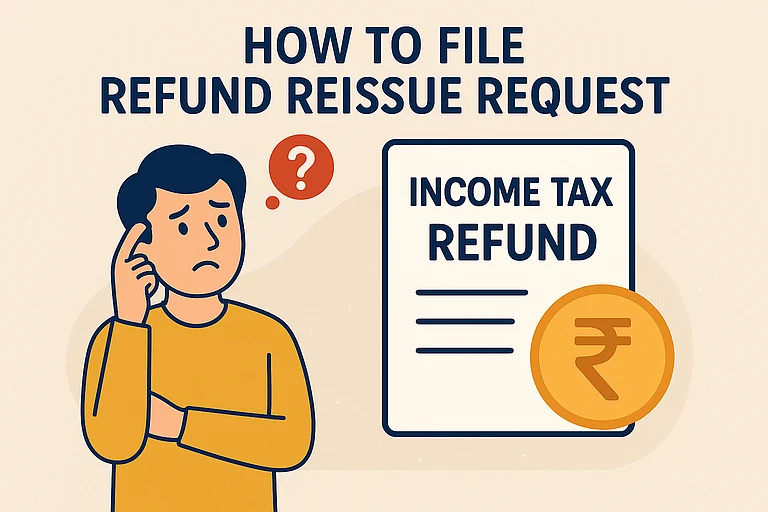If you have had more than one job in the past financial year (2024-25), filing your income tax return (ITR) might not be as straightforward as you would have hoped. It is not complicated, but it does call for some extra care. Multiple employers mean multiple salary entries, multiple Form 16s, and a real risk of missed details or duplicated deductions.
ITR For AY 2025-26: Switched Jobs This Year? Here’s What You Need To Know About Filing ITR With Multiple Form 16s
If you have more than one job in the past financial year (2024-25), filing your income tax return might be a bit challenging because of the multiple Form 16s involved and the consequent chances of wrong tax calculation at the employers’ end because of the truncated work duration, among others
It is not uncommon for people to miss reporting some income, or worse, end up with an unexpected tax bill because their new employer was not told about their previous salary. That kind of oversight can trip up even those who are otherwise diligent about tax filing.
Here’s all that you must pay attention to:
Start With All Your Form 16s
You will need a Form 16 from every employer you have worked for during the applicable financial year. These are typically issued by mid-June, so make sure you have got them all before you start filing your tax return. Think of it as the basic starting point: your total salary, the tax deducted, and the exemptions and deductions considered by each employer will be listed here.
The problem? Each employer treats you like you only exist for them. So they will each apply the basic exemption limit, standard deduction, and maybe even 80C benefits if available or applicable. If you don’t correct this while filing your return, you could end up paying less tax than you actually owe, at least on paper. And that’s how people land in trouble.
Informing Your New Employer Isn’t Just a Formality
If you did not tell your current employer how much you earned at your last job, they would have calculated your tax liability based only on the income you earned after joining them. That can throw the numbers off completely.
Say you made Rs 6.5 lakh at your previous job and Rs 2.5 lakh at your new one. If your new employer is not aware of the earlier income, they might think your total income is below the taxable limit and deduct nil tax. But your actual taxable income is Rs 9 lakh. That gap will show up when you file your return, and by then, it could be late to avoid interest or penalties.
However, if this has already happened, you can still fix it. For this, you need to calculate the remaining tax due, and pay it before you file your ITR.
Tally Everything: Salary, TDS, and Deductions
Your ITR needs to reflect your complete income for the year. Rather than just copy-pasting numbers from one Form 16, you will need to separately add up salary details from all employers.
You must closely look at the different components of your salary, such as:
Basic salary under Section 17(1)
Perquisites under Section 17(2)
Profits in lieu of salary under Section 17(3)
The income tax department expects these figures to be correct, and any mismatch can trigger scrutiny. Cross-check all TDS entries in Form 26AS with what is mentioned in your Form 16s and payslips. If something doesn’t line up, follow up with the employer and get it sorted before you file your return.
Don’t Double-Count Deductions
This is a common one: both employers may have given you the full benefit of Section 80C or standard deduction while deducting tax at source (TDS). But you only get to claim these once.
Here’s what you can do:
Look at your actual investments and eligible deductions, whether it is equity-linked savings schemes (ELSSs), Public Provident Fund (PPF), health insurance, or home loan repayments. Then total them up and report only that amount under Chapter VI-A in your ITR. The same goes for house rent allowance (HRA). If you missed submitting rent receipts to your office, you can still claim it at the time of filing your return, but you will have to do the calculations yourself.
If You Did Not Get Form 16
This could happen, especially when leaving a company on short notice or after some delay in exit formalities. But you are still responsible for reporting that income.
Under such conditions, taxpayers can use their payslips to break down the salary. So, include allowances, subtract exemptions like HRA (if eligible), and make sure you reconcile TDS entries with Form 26AS. You will not get the same convenience as a ready-made Form 16, but it is still doable.
Figure Out Your Final Tax Liability
Once everything is in place, such as your full salary, deductions, TDS, and any advance tax paid, it is time to do the final math.
Check which tax regime you are using. If it is the old regime, you can use all your deductions. If you have opted for the new regime, most of them will not apply. After that, calculate your total tax liability based on the slabs, add cess and any surcharge (if applicable), and subtract what you have already paid.
If there is a gap, pay the balance as self-assessment tax. If you are due a refund, make sure your bank details are correct in the return.
Key Things To Keep In Mind
Keep a copy of the rent receipts, insurance premiums, and investment proofs, even if you were not asked for them.
Don’t skip checking AIS (Annual Information Statement). It is becoming increasingly important in ensuring your ITR lines up with reported data.
The deadline to file your ITR for FY 2024-25 (AY 2025-26) is September 15, 2025.



